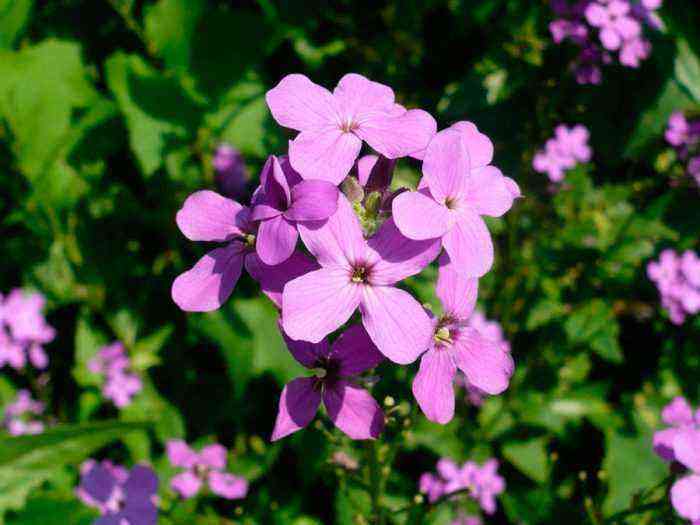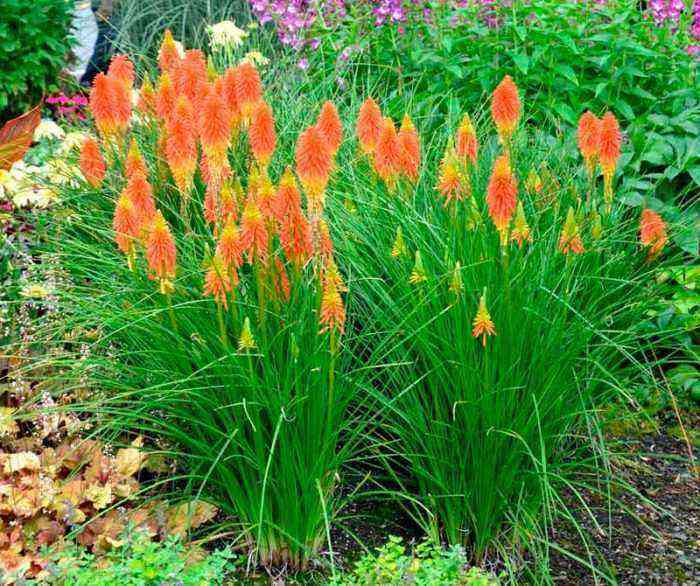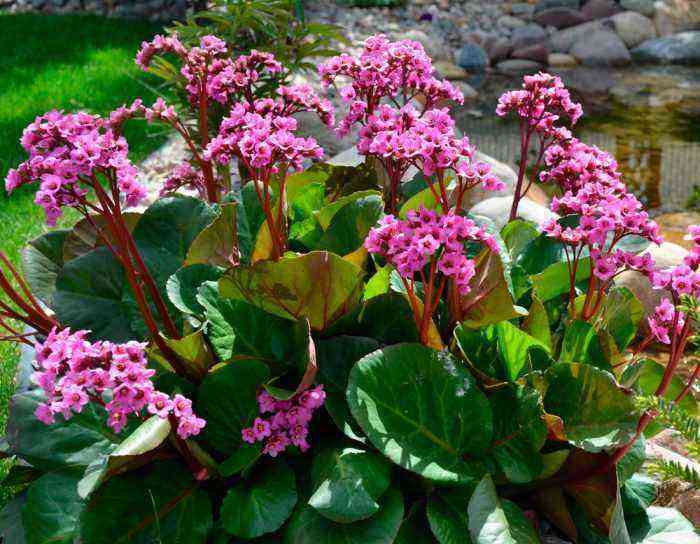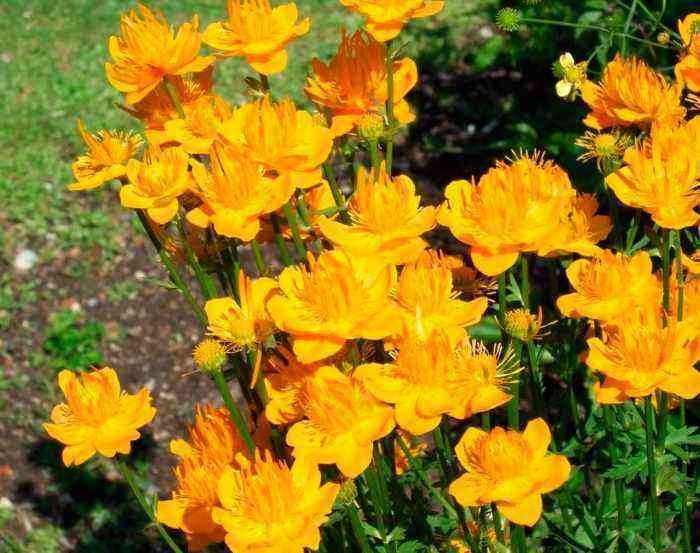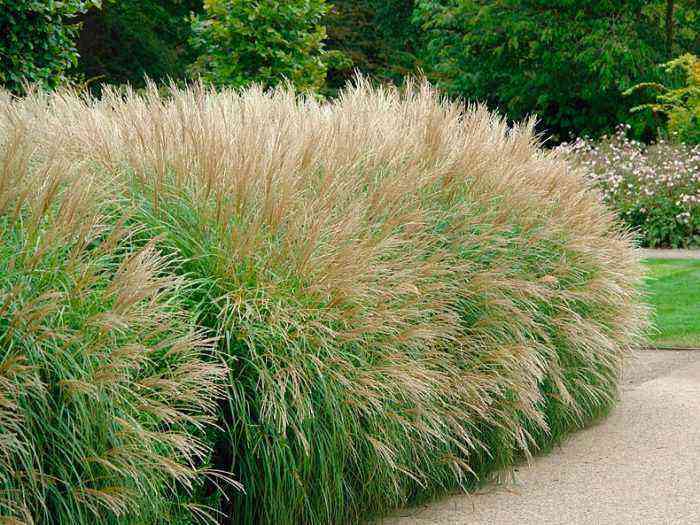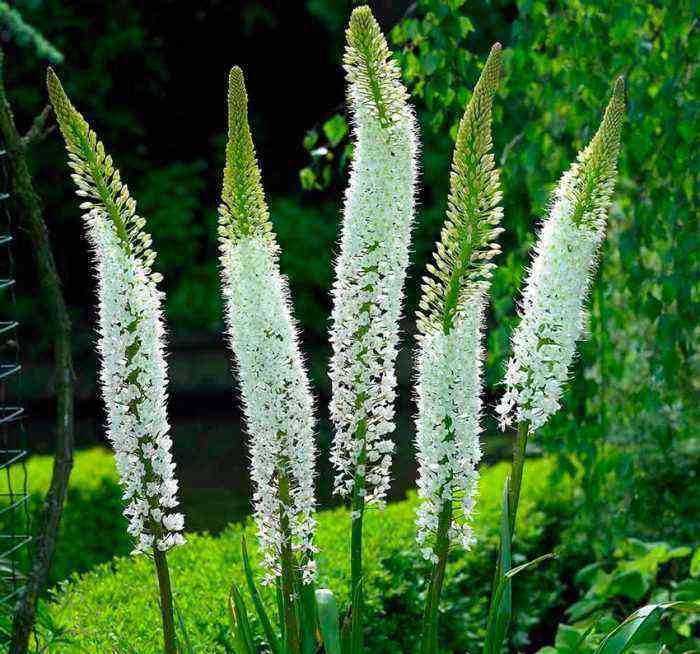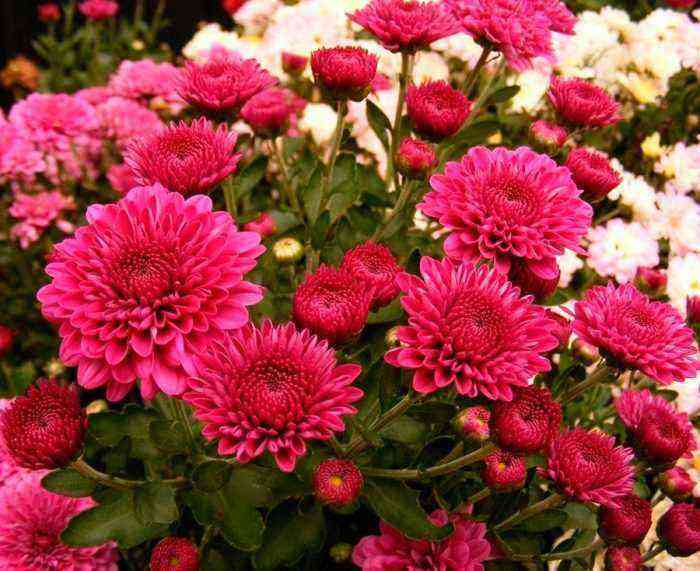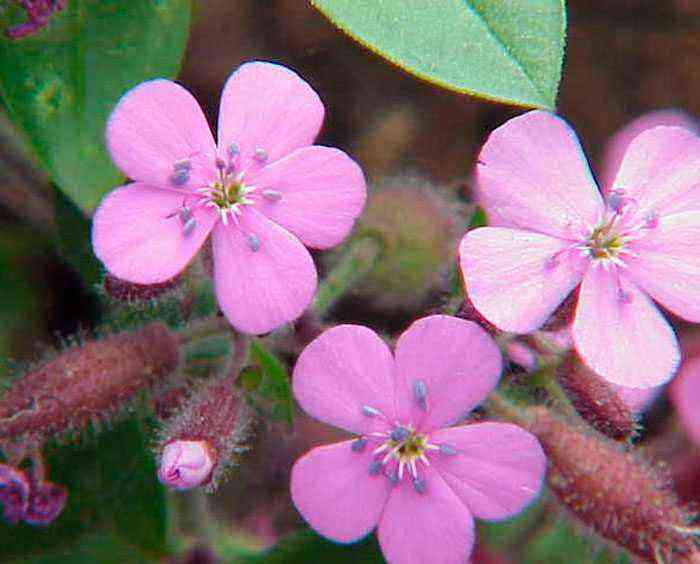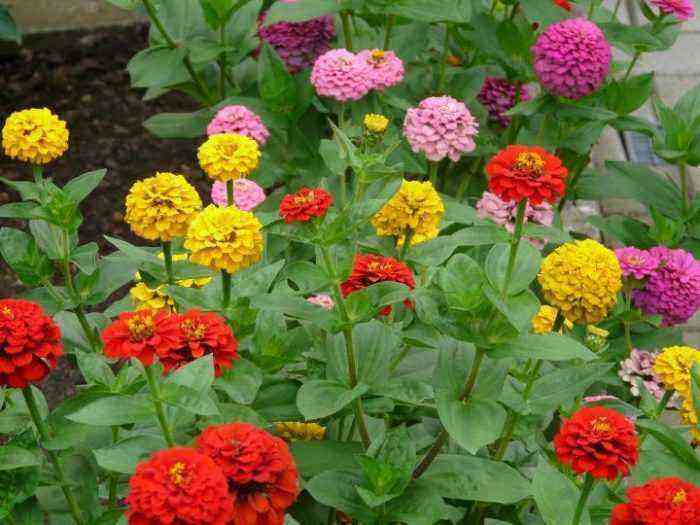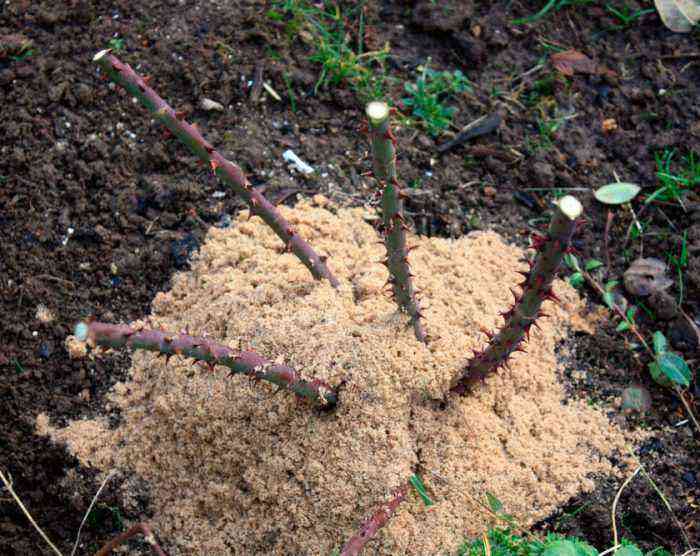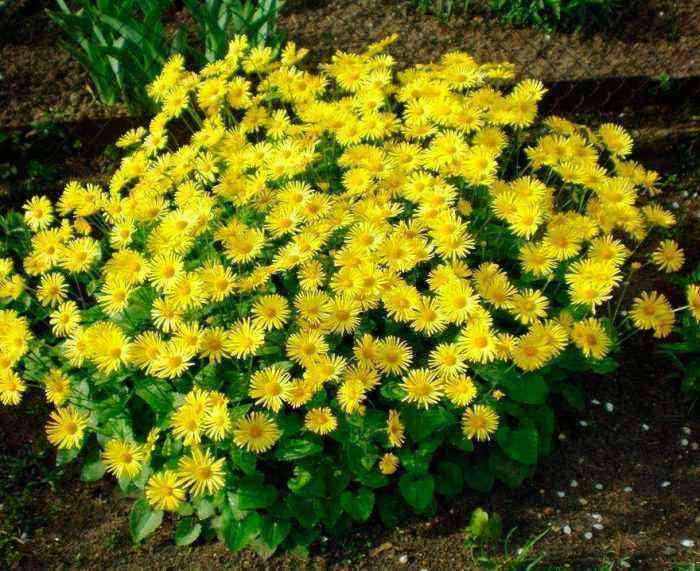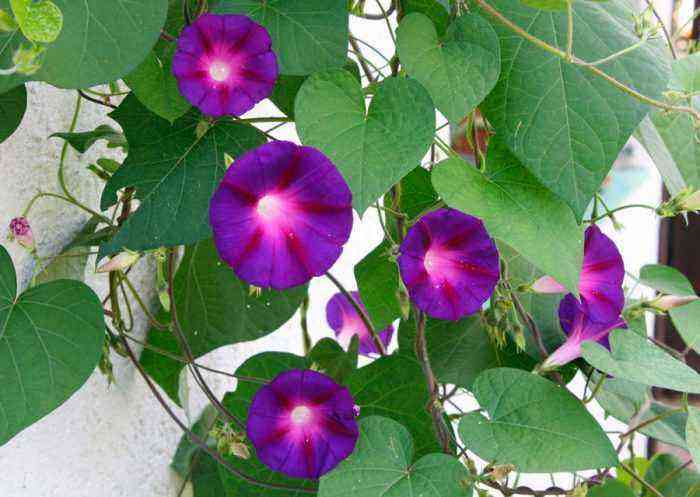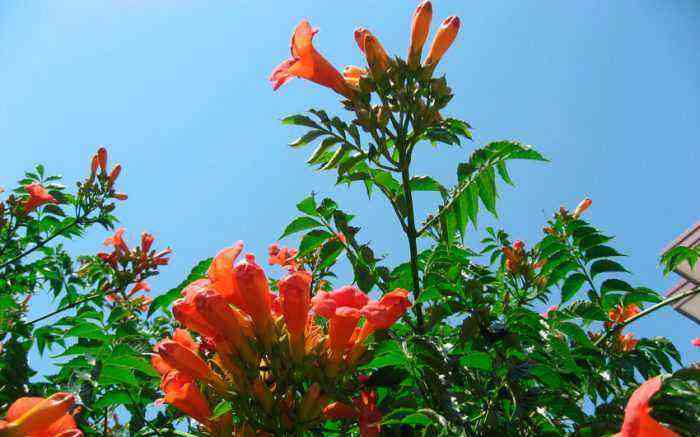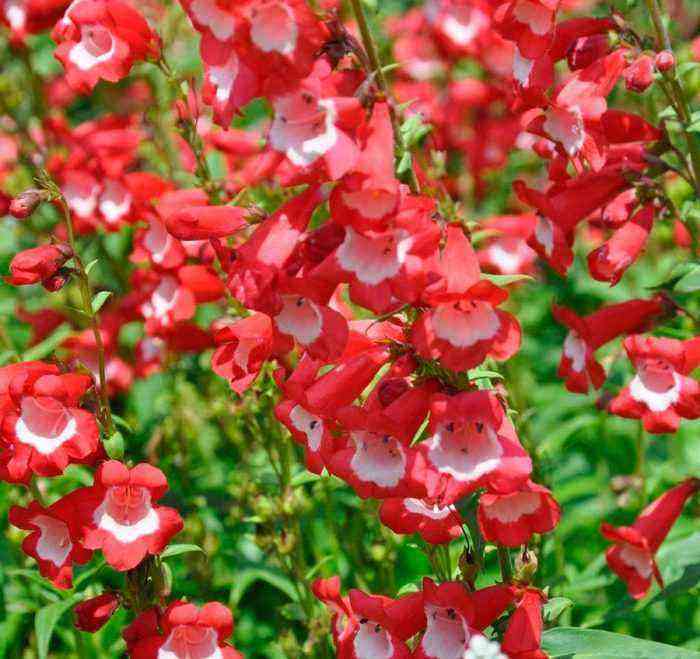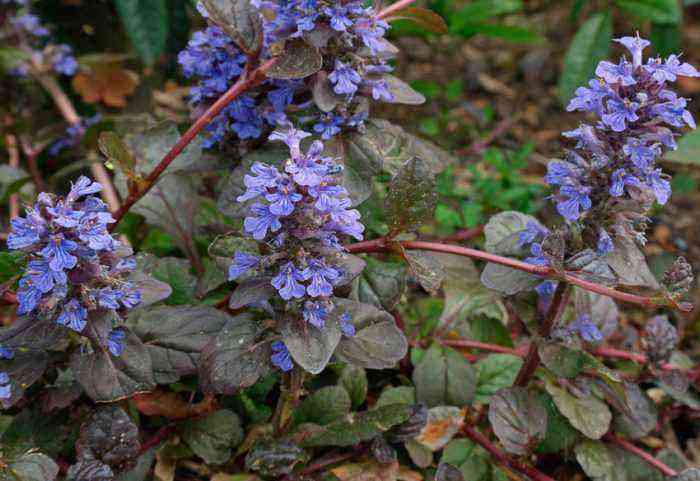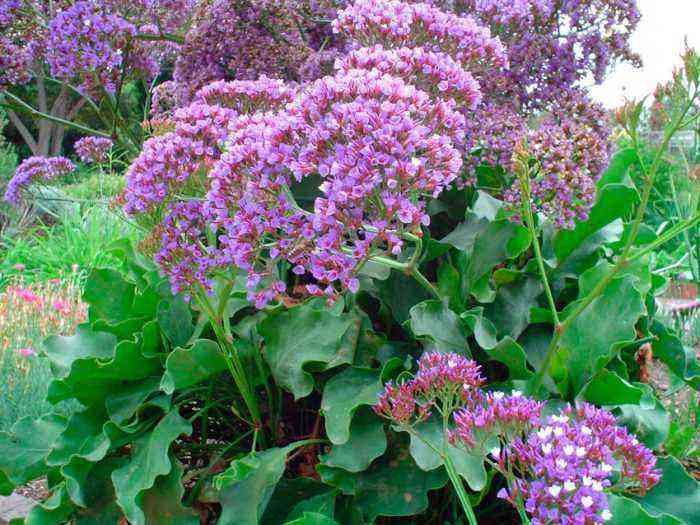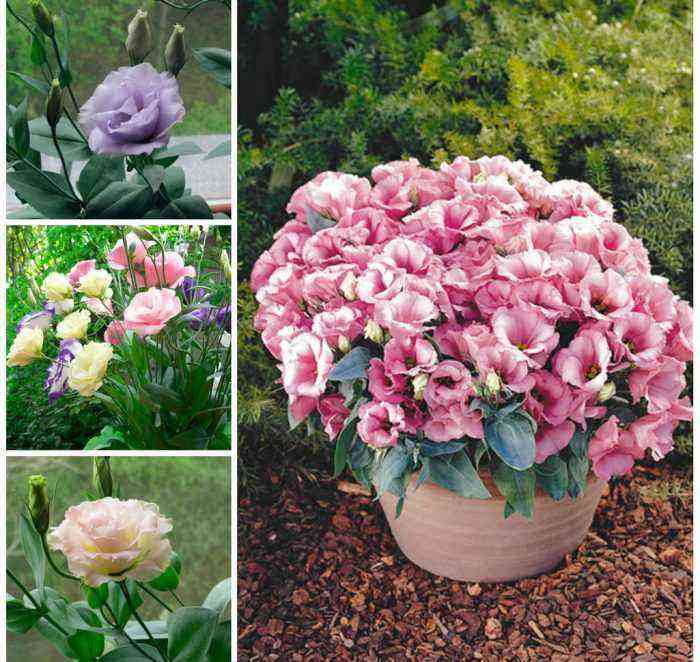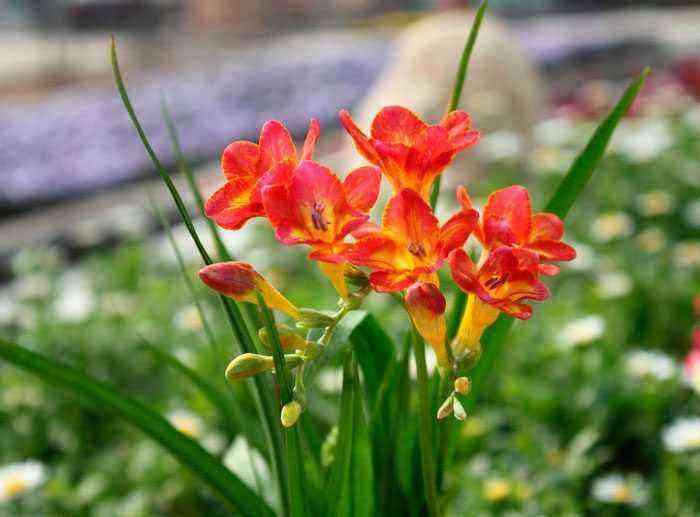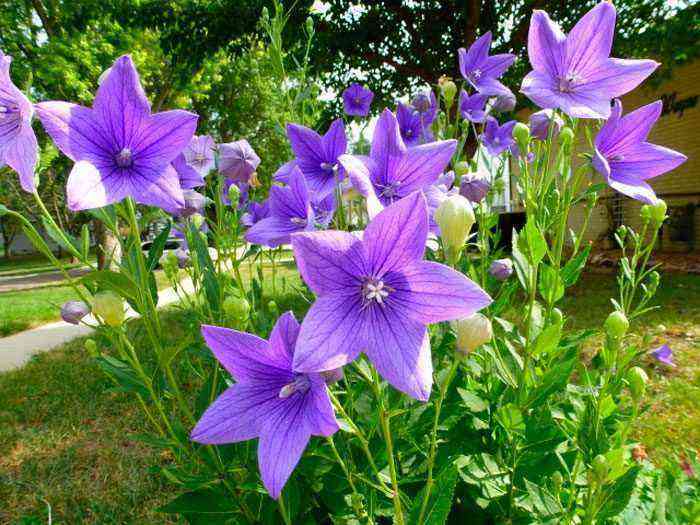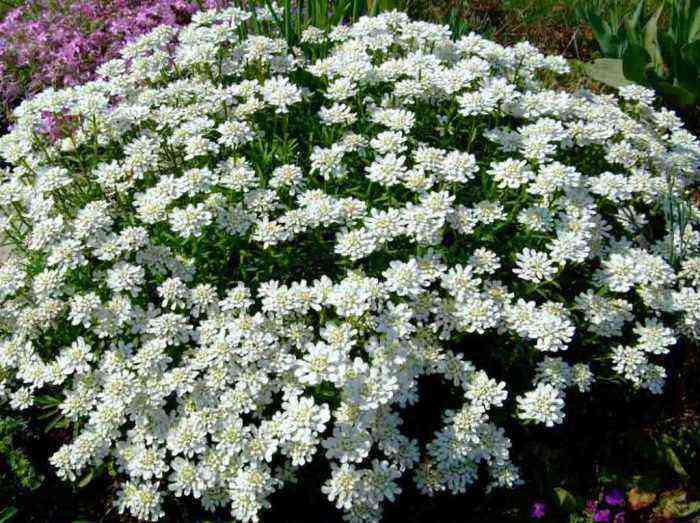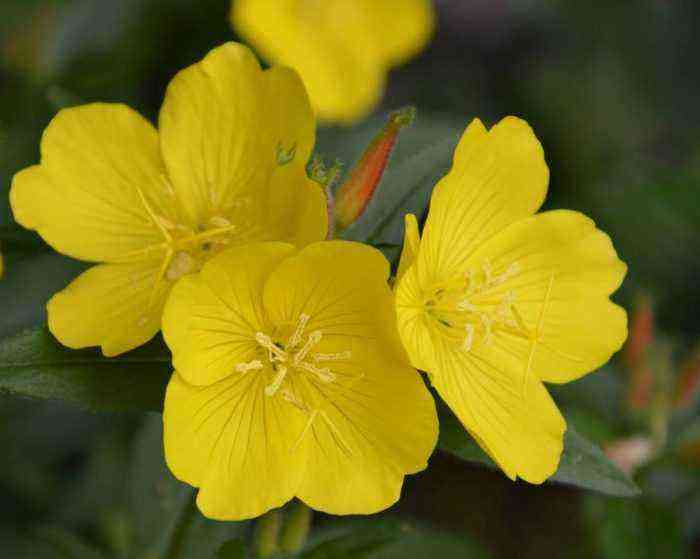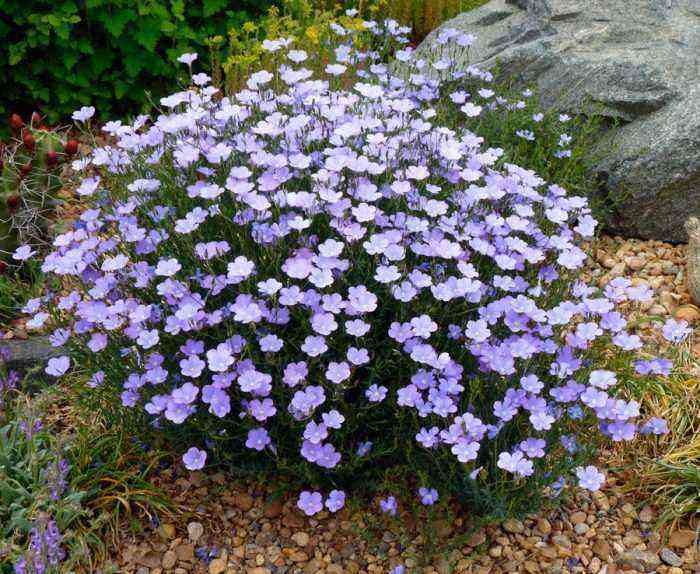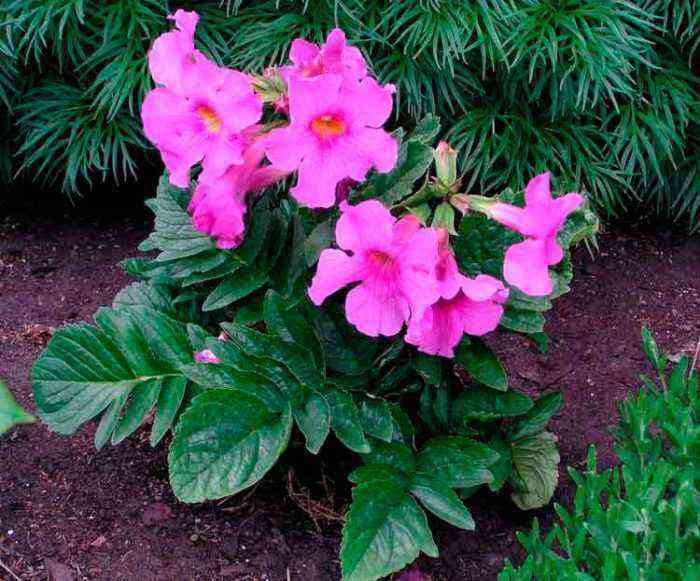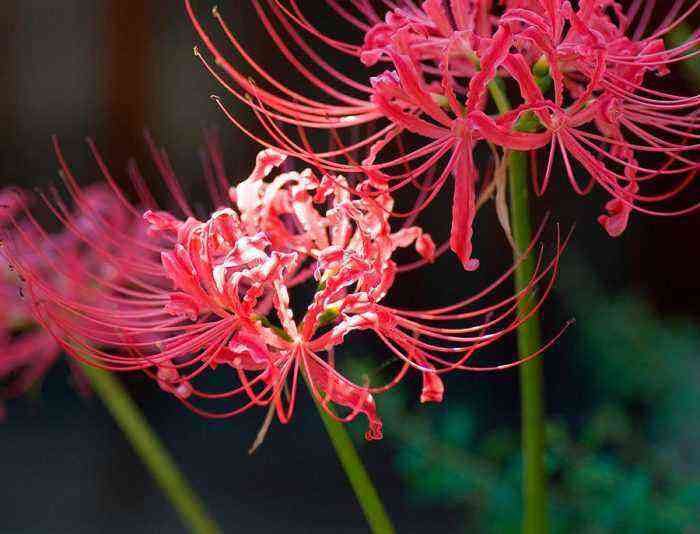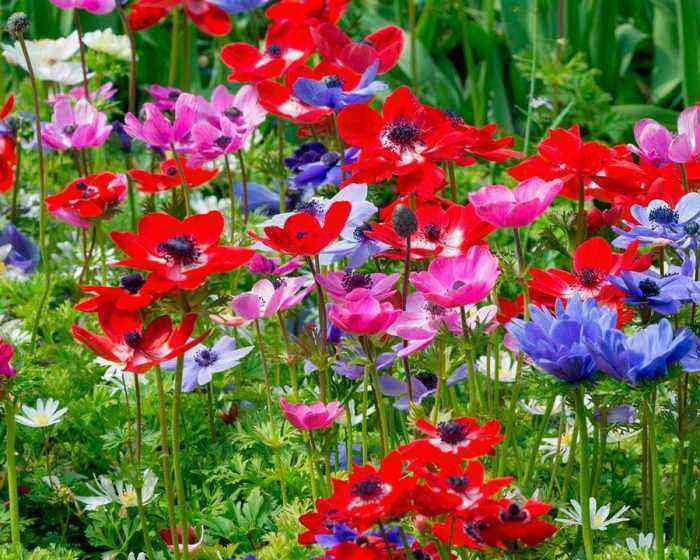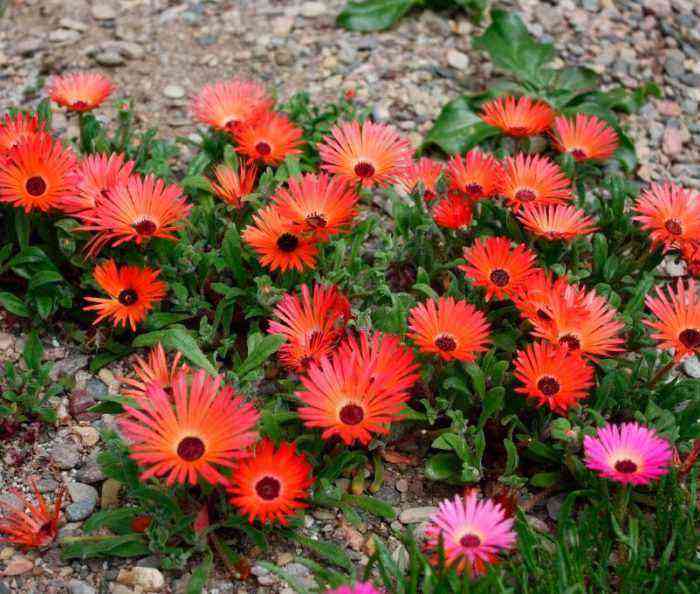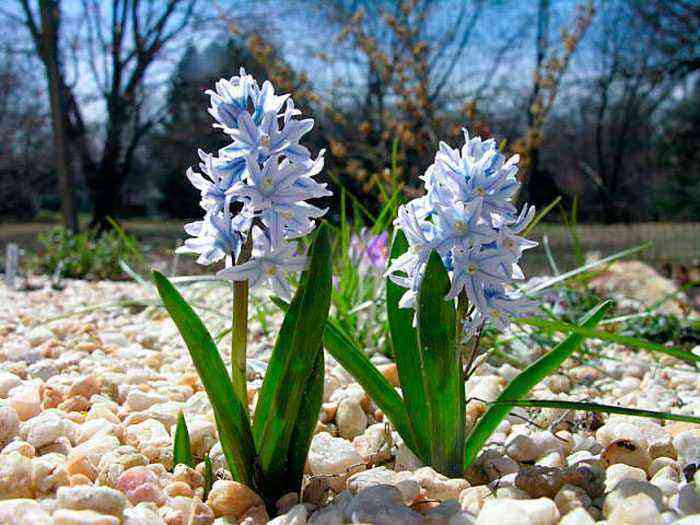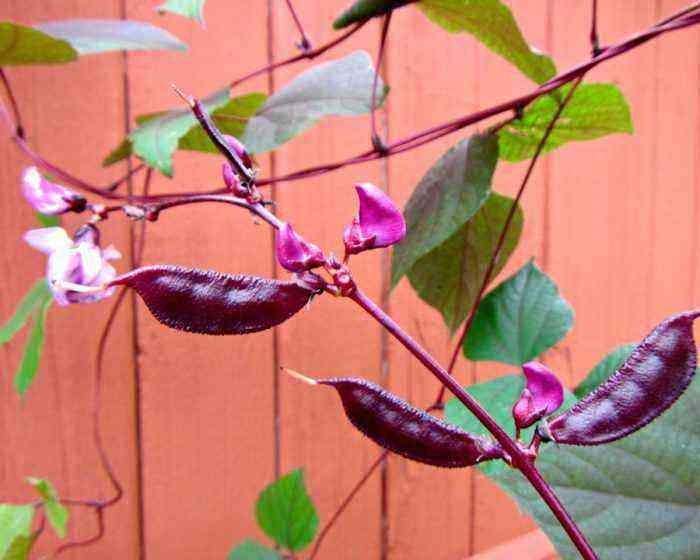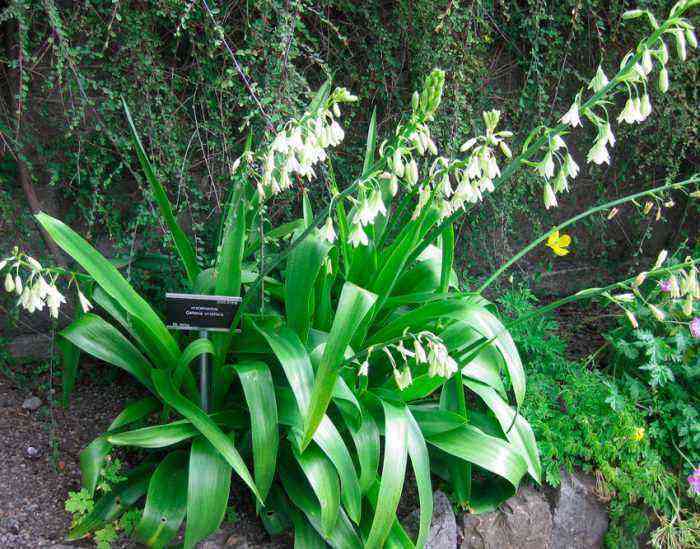The herbaceous perennial plant hellebore (Helleborus) is directly related to the buttercup family. According to various sources, this genus unites 14-22 species. Under natural conditions, such plants can be found in the shady areas of the mountains of Europe (for example, in the Mediterranean), and also in Asia Minor. Most of the species are found on the Balkan Peninsula. In Germany, the traditional Christmas gift is a hellebore in a pot. There is a legend that tells that the little food was very upset when he had nothing to present to the born Jesus as a gift, he began to cry, and where his tears fell, wonderful flowers grew, the boy collected them and presented them to Christ. In European countries, such a plant is called the “rose of Christ”, and in Russia, the “winter house”, the fact is that sometimes the hellebore begins to bloom in January or November.
Hellebore features
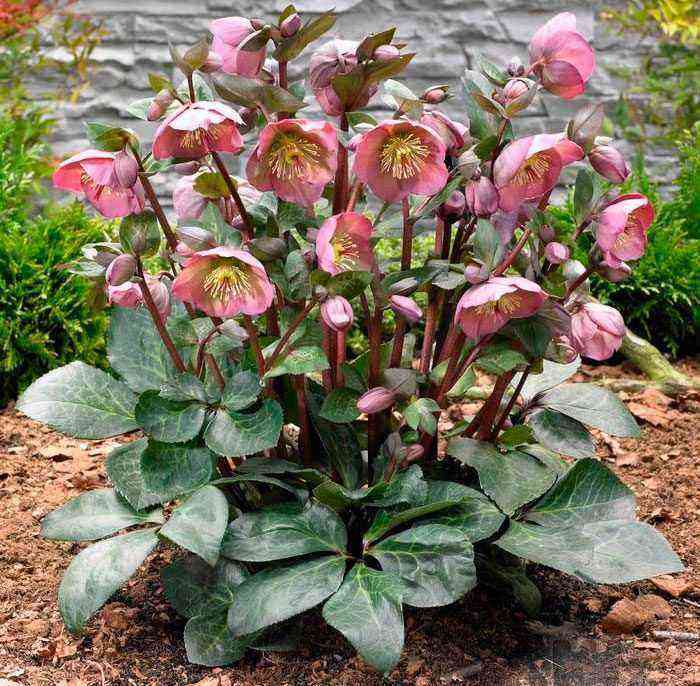

The hellebore height can vary from 0,2 to 0,5 meters. A short thick rhizome and a weakly branched simple stem. Leathery basal leaf plates have long petioles. They are stop-shaped or finger-dissected. Cup-shaped flowers have a long stalk, they bloom at the very top of the stem. Flowering is observed from the end of the winter period to the last days of June. Sepals are often confused with flower petals. In fact, the petals were transformed into nectaries. The flowers can be colored in different shades of white, light yellow, purple, pink, violet and ink, and there are also two-tone varieties. The flowers themselves are double and simple. Many gardeners love this plant because it blooms very early, and it is so nice when beautiful flowers appear in the garden after a dull winter. But this is not its only advantage, it also has a high resistance to frost and drought. However, when planning to plant a hellebore, you must remember that it is a poisonous plant, like all other buttercups.
Planting a hellebore in open ground


What time to plant
Without a transplant, such a flower can be grown in the same place for about 10 years. When choosing a site for planting, it should be borne in mind that the hellebore reacts extremely negatively to transplantation. In this regard, the choice of a suitable location must be taken very seriously. For growing this flower, it is best to choose a loose, moist, neutral, clayey soil that must be well drained. The site should be shaded and it is good if it will be located between shrubs and trees. To achieve maximum decorative effect from such a flower, it is recommended to plant it in small groups. The hellebore should be planted in April or September.
How to plant
The size of the planting holes should be 30x30x30 centimeters, while a distance of about 0,3 meters should be maintained between the bushes. The ½ part hole should be covered with compost. After that, the hellebore rhizome is placed in a hole and gradually covered with soil, which is well compacted. The planted flowers must be watered. The planted bushes need to be watered abundantly and often within 20 days from the moment of planting.
Hellebore care


Taking care of such a flower is quite simple. Before the hellebore blooms in springtime, all old leaf plates must be cut off. This is necessary so that the plant does not become infected with fungal spot. Young leaves grow after the plant stops blooming. After the flowers wither, it will be necessary to sprinkle the soil around the plants with a layer of mulch (compost or decomposed peat). If the weather is hot, then the hellebore must be systematically watered, and weeds must be removed in a timely manner and the soil surface must be loosened. It also needs to be fed 2 times per season with mineral fertilizer and bone meal.
Reproduction of hellebore
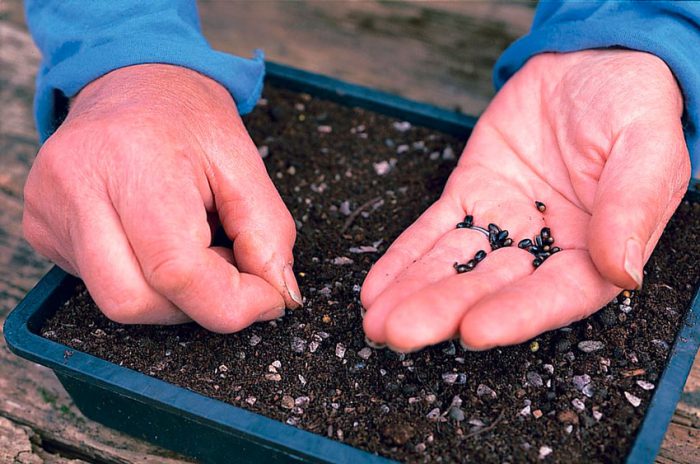

These flowers are often grown from seeds, but they can also be propagated using vegetative methods. Sowing for seedlings is carried out in the last days of June, immediately after the ripe seeds are collected. To do this, use humus, moist, loose soil, and the seeds should be buried by about one and a half centimeters. The first shoots can be seen in March next year. Grown seedlings, after the appearance of 1 or 2 pairs of leaf plates, must be dived into the flower bed (it must be located in shade). There hellebores will grow for 2 or 3 years. The transplant of mature seedlings to a permanent place can be done in September or April, while the gardener will see the first flowering only 3 years later, after the plant has fully recovered after transplantation. It should be borne in mind that the stinking hellebore multiplies well by self-seeding.
This plant is also propagated by dividing the bush. In spring, when flowering ends, those bushes that are 5 years old should be removed from the ground. The rhizome must be carefully divided into several parts, then the cuts are sprinkled with crushed coal, and then the cuttings are planted in pre-prepared holes. In the spring, the black hellebore is propagated in this way, and for dividing the bushes of the eastern hellebore, it is recommended to prefer the autumn time.
Diseases and pests
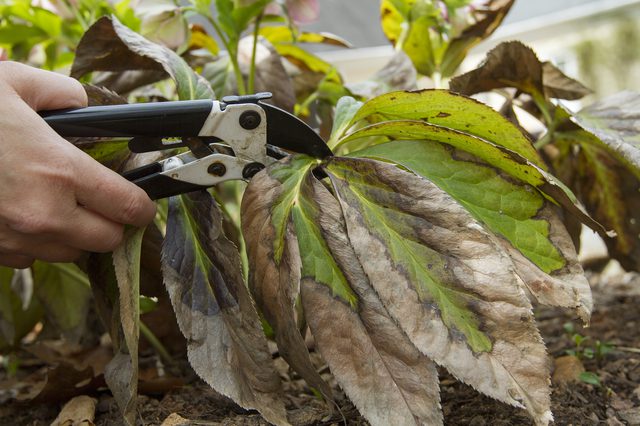

Hellebore leaves can attract gastropods such as snails and slugs, as well as mice, aphids, and also the caterpillars of the hop worm can harm it. To kill mice, bait with poison is used, which should be placed in those places where these rodents were seen. Slugs and snails are robbed from bushes by hands, and insecticides are used to kill insects, for example, you can get rid of caterpillars with Aktellik, and aphids with Biotlin or Antitlin.
The hellebore is most often affected by anthracnose, downy mildew, and ring spot. It should be remembered that aphids are a carrier of spotting, in this regard, it is necessary to take measures to combat such a pest in a timely manner. The infected parts of the bush are cut and destroyed, and then the plant and the soil around it are treated with a fungicide. If brownish-black spots with a barely visible ring pattern appear on the leaf plates, this means that the hellebore is affected by anthracnose. Infected leaves must be cut off and burned, while the bush is treated with a product that contains copper. If new leaf plates do not grow on the bush, and those that have already grown undergo deformation, spots of a dark color appear on the front surface, and a gray bloom appears on the seamy surface, this means that it is affected by downy mildew. Infected parts of the plant should be cut out, while the bush and the surface of the site will need to be sprayed with copper oxychloride or Pervikur.
You should know that the hellebore is distinguished by a rather high resistance to diseases and harmful insects, and problems with it begin after violations of the rules of planting or care, for example, the plant was planted in overly acidic soil. In order to find out the acidity of the soil, you can conduct the following test, for this you need to collect 1 small spoonful of earth, pour it on the glass, which should be on the surface of a dark color, then the soil is slightly moistened with table vinegar. Then you need to evaluate the result:
- a large amount of foam indicates that the earth is alkaline;
- medium foam means the soil is neutral;
- the absence of foam indicates that the soil is acidic.
In order to fix acidic soil, it is recommended to add wood ash, fluff lime or dolomite flour to it.
Hellebore after flowering
Seed collection
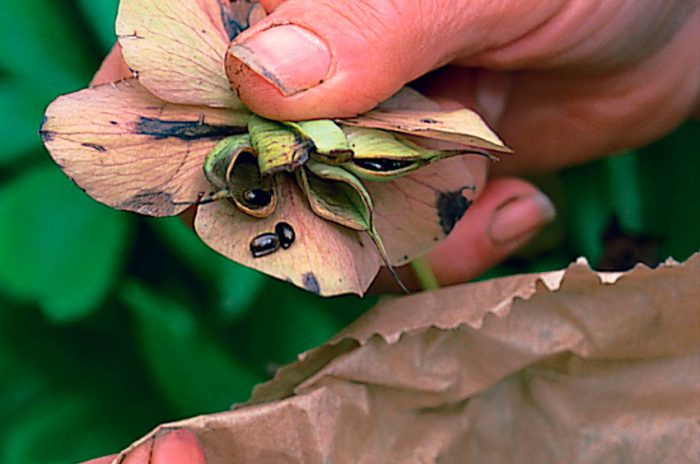

Seed ripening begins in June and can last throughout the summer. It should be borne in mind that at one point the box may suddenly burst, and the seeds will spill out onto the site. In order to prevent this, gauze bags should be put on several pieces of still unripe boxes. Then you just have to wait until the ripe seeds spill out into this bag by themselves. Then they will need to be dried by placing them in a dry, well-ventilated room. Then they are placed in a paper bag. But it is not recommended to store such seeds, as they very quickly lose their germination, in this regard, it is best to sow them immediately after collection.
Wintering


It was already mentioned above that this perennial has a very high resistance to frost. But at the same time, in a very cold, little snowy winter period, it can still freeze slightly, especially for young specimens. Therefore, for the winter, it is better to cover the hellebore with spruce branches with famously dried fallen leaves.
Types and varieties of hellebore with photos and names
There are several popular types and varieties of hellebore.
Black frost (Helleborus niger)


This species is one of the most beautiful and widespread. Under natural conditions, such a hellebore can be found in mountain forests from Yugoslavia to southern Germany. Such an evergreen perennial plant can reach a height of 0,3 m. The diameter of its large upward-looking flowers reaches 8 centimeters. The flowers are located on long peduncles, the height of which varies from 0,3 to 0,6 m. Inside, the flowers are snow-white, and outside are pale pink. Flowering begins in the first days of April and lasts a little less than half a month. The leaf plates of this species are hibernating, they are leathery, have a high density and a spectacular dark green color. It has a very high frost resistance (up to minus 35 degrees). In culture, this species has been since the Middle Ages. The most popular varieties are Nigristern and Nigerkors, and varieties:
- Potters Will… This variety has white flowers with the largest diameter (about 12 centimeters).
- HGC Joshua… This hellebore is the earliest, its flowering begins in November.
- Pracox… It blooms in November, the color of the flowers is light pink.
Caucasian hellebore (Helleborus caucasicus)


In the wild, this species can be found both throughout the Caucasus and in Turkey and Greece. Evergreen hard leathery leaf plates with long petioles can reach 15 centimeters in length, they are divided into 5-11 wide segments. The height of the peduncles can vary from 0,2 to 0,5 meters. On them there are drooping flowers, the color of which can be green-yellow with a brownish tint or white with green, and in diameter they reach 8 centimeters. Flowering begins in the last days of April and lasts 6 weeks. This species is notable for its winter hardiness, and it has been cultivated since 1853. It is considered the most poisonous of all.
Abkhaz hellebore (Helleborus abchasicus)
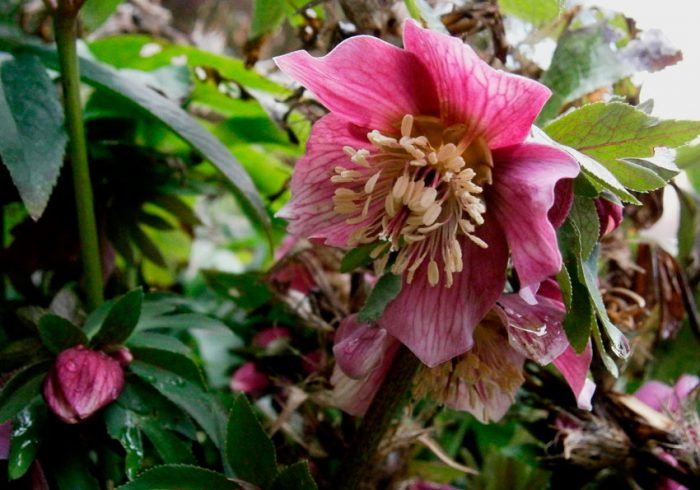

Bare leathery leaf plates have long petioles, their color is green-purple or dark purple. Peduncles are colored red-purple and reach a height of 0,3–0,4 meters. The diameter of the drooping dark red flowers is about 8 centimeters; sometimes you can see specks of a darker color on them. Flowering in this frost-resistant species begins in April and lasts 6 weeks. Has a variety of garden forms.
Eastern hellebore (Helleborus orientalis)
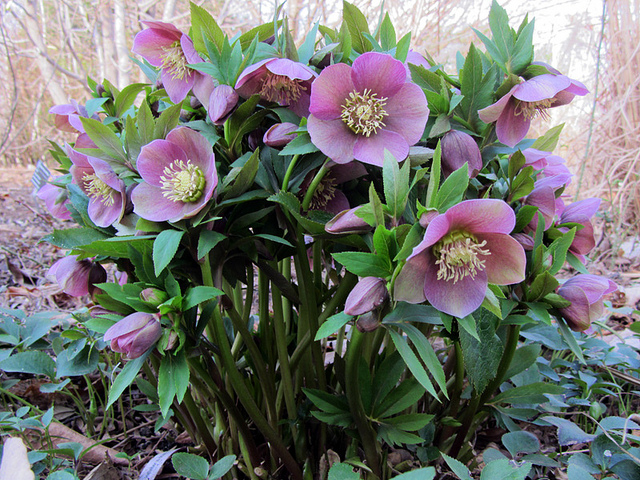

In natural conditions, it can be found in Greece, Turkey and in the Caucasus mountains. Such an evergreen perennial can reach a height of 0,3 m. The diameter of lilac flowers is 5 centimeters. Leaf plates in this species are often affected by a fungus. There are many varieties, of which the following are the most popular:
- White Swan… Flowers are white.
- Rock and Roll… On the surface of the flowers of this species, there are pinkish-red specks.
- Blue Anemone… The color of the flowers is pale lilac.
- Variety series Leidy Series… Erect bushes are fast-growing, flower stalks reach a height of 0,4 meters. Flowers come in 6 different colors.
Stinking hellebore (Helleborus foetidus)
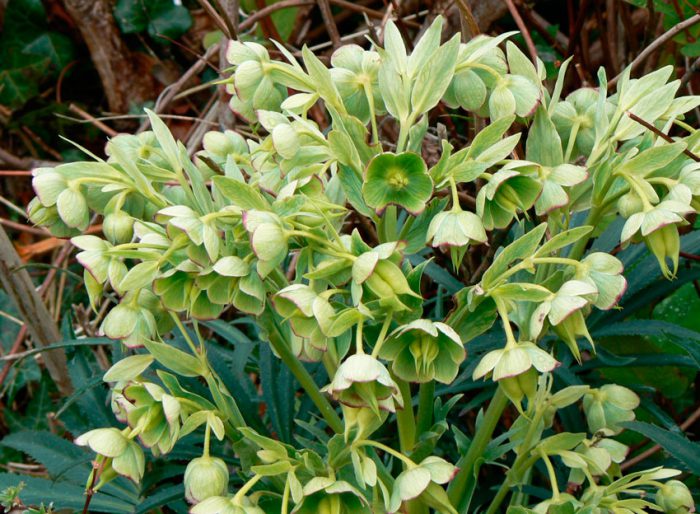

This species is native to the rocky slopes and light forests of Western Europe. Leafy shoots, by the autumn period they have a height of 0,2 to 0,3 m. The wintering leaf plates are divided into narrow dark green glossy segments. The height of the peduncles is about 0,8 meters, dense inflorescences grow on them, which include many small bell-shaped flowers that have a green color and a brownish-red edge. This species has a very high drought resistance. The most popular variety is Vester Flix: the segments of the leaves are even narrower than the main species, the branches of the inflorescences have a pale red tint.
Corsican hellebore (Helleborus argutifolius)
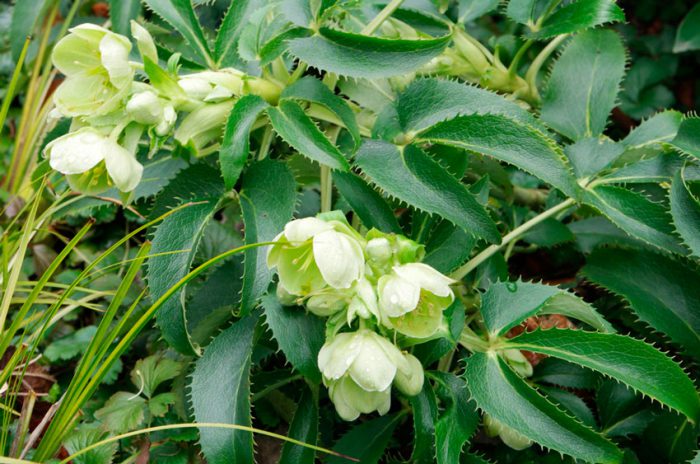

In natural conditions, it can be found on the islands of Sardinia and Corsica. Such an evergreen perennial can reach a height of about 0,75 m. There are several erect shoots that grow very quickly in width. The flowers are cupped and are green-yellow in color and are part of large, complex racemose inflorescences. Under natural conditions, such a plant begins to bloom in February, and in temperate climates around April. In mid-latitudes, shelter for the winter period is necessary for him. The most popular variety is Grunspecht: the color of the flowers is greenish-red.
Reddish hellebore (Helleborus purpurascens)


Homeland is Southeastern Europe, prefers to grow on forest edges and in shrubs on the territory from Romania and Hungary to the western regions of Ukraine. Large basal leaf plates have long petioles, they are finger-dissected into 5–7 parts. The front surface is bare, glossy green, and the back is glaucous. The drooping flowers are about 4 centimeters in diameter and have an unpleasant aroma. Outside, they are painted in a dusty purple-violet color, and inside – light green, after a while they turn green. Flowering begins in April and lasts about 4 weeks. Cultivated since 1850
Hybrid hellebore (Helleborus x hybridus)
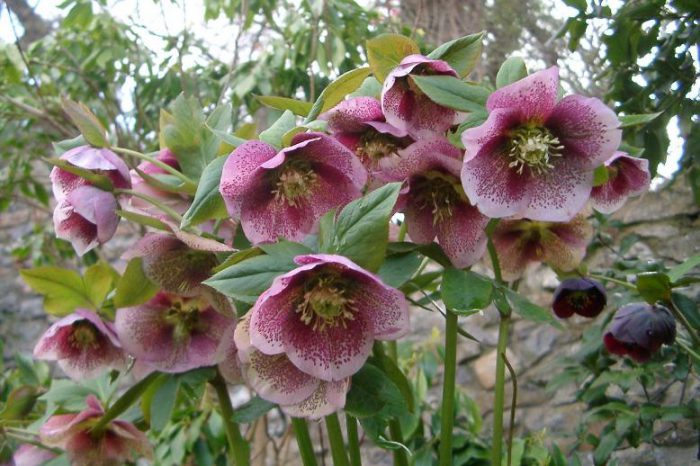

This species combines varieties of garden hybrids between different types of hellebore. Flowers can be painted in different colors and have a diameter of 5-8 centimeters. For instance:
- Violetta… The central part of the white flowers is fluffy, there are also thin pink veins and a border.
- Belinda… Terry white flowers with a pinkish-green glow and a border along the edge of the petals.
- Queen of the Knight… The dark purple flowers have yellow stamens.
In addition to these species, they are also cultivated such as: green, fragrant, shrub, multipart, Tibetan, Sterna, etc.
Hellebore properties
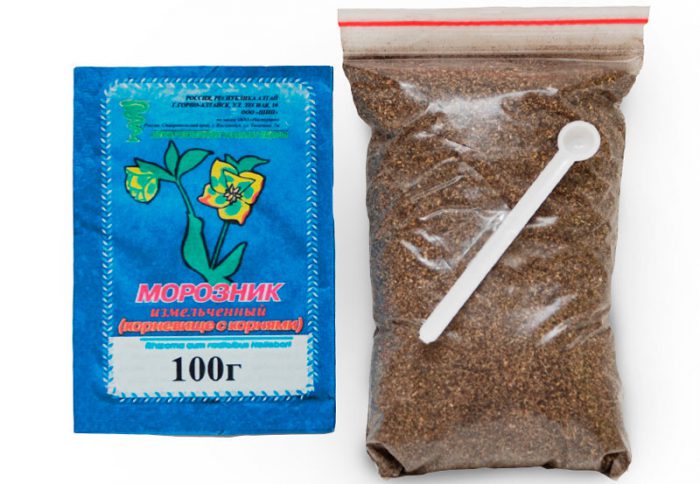

In alternative medicine, the medicinal properties of black hellebore, as well as Caucasian, are often used. These plants are able to normalize metabolic processes in the body, lower blood pressure and reduce the amount of sugar in the blood. They also have a diuretic, laxative and antibacterial effect. They help cleanse the organs of the gastrointestinal tract from polyps and parasites, and stones are removed from the urinary and gallbladder. Used to treat migraines, stomach ulcers, osteochondrosis, rheumatism, arthritis and sciatica. Contributes to the maintenance of the cardiovascular system. They cleanse the blood, strengthen the body’s immune system. They are used for the prevention of oncology and colds, and such plants are also able to exterminate tumor formations at an early stage. This is not a complete list of the healing qualities of hellebore, which you may not have known about, growing it in your garden for many years.
Medicines are prepared only from the root of this plant, while you should not forget that it contains poison. The roots are harvested in September after the seeds are fully ripe. They should be rinsed using a stiff-bristled brush. Then they are cut into pieces and dried at a temperature of 40 to 45 degrees in special dryers. Such raw materials can retain their properties for 2 years. From this root, you can make an infusion or a decoction, as well as a powder that has very powerful healing properties.
Hellebore is also widely used by those who want to lose weight. Weight loss occurs due to the fact that the plant gently removes toxins from the body, removes excess fluid, promotes the rapid breakdown of fats and accelerates fat metabolism. At the same time, the kilograms will go away without a strict diet and hunger strikes. For 4 weeks of using a hellebore for weight loss, the average person manages to get rid of 4-5 kilograms of excess weight.
Such a plant has a very large number of contraindications, it is forbidden to use it:
- with liver diseases;
- children under 14 years old;
- people with problems with the cardiovascular system (tachycardia, heart attack, etc.);
- during pregnancy and breastfeeding.
In case of an overdose, a person may feel ringing in the ears, thirst, his tongue and throat swell, in the event that the poisoning is severe, then this often leads to collapse or cardiac arrest. Among all plants, the hellebore is distinguished by the fact that it has the largest amount of heart poisons. In some cases, people die after the first use of a product made from this plant. In this regard, before you start taking such a drug, be sure to consult with a qualified specialist who can choose the required dosage and regimen.

